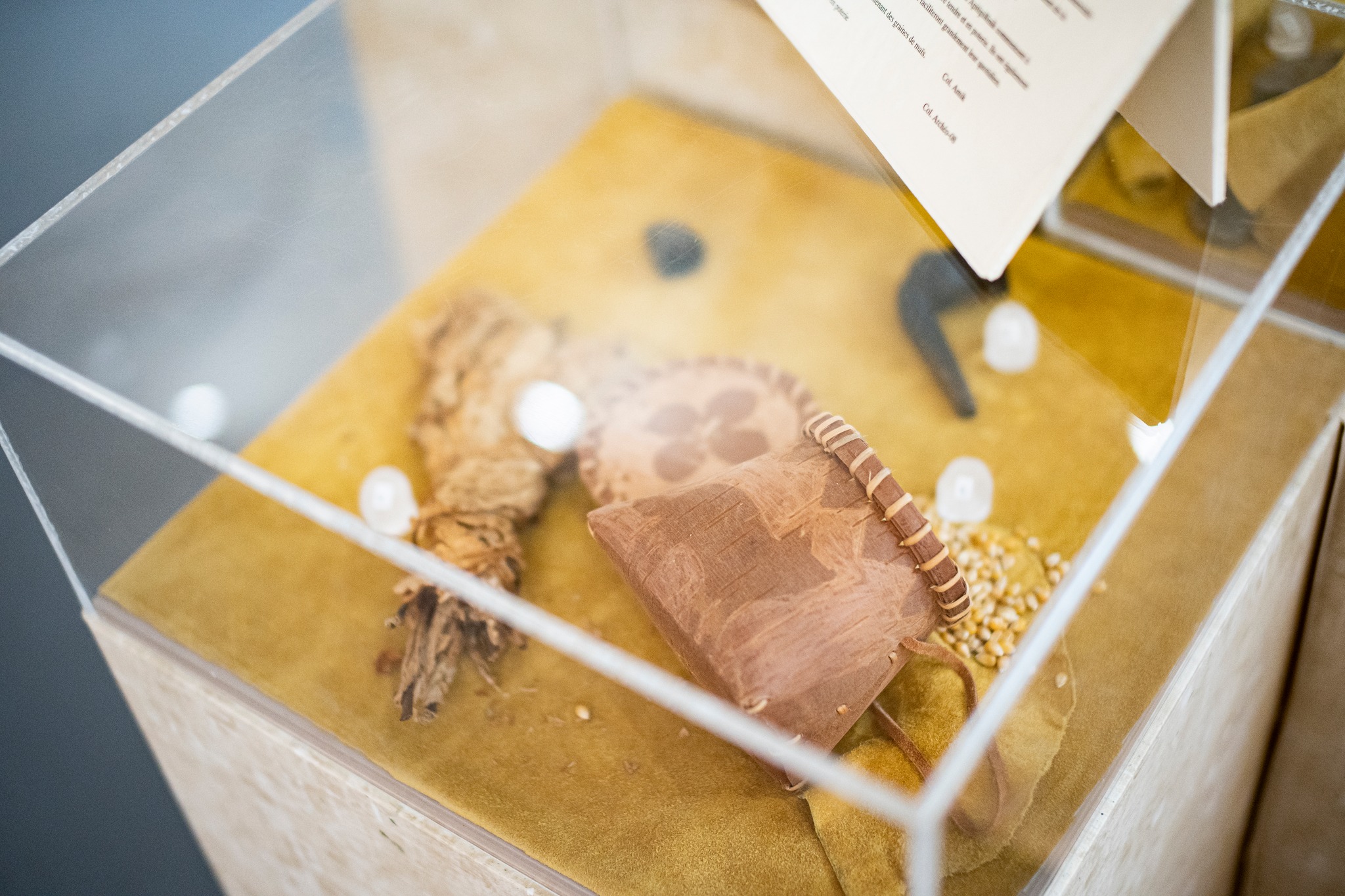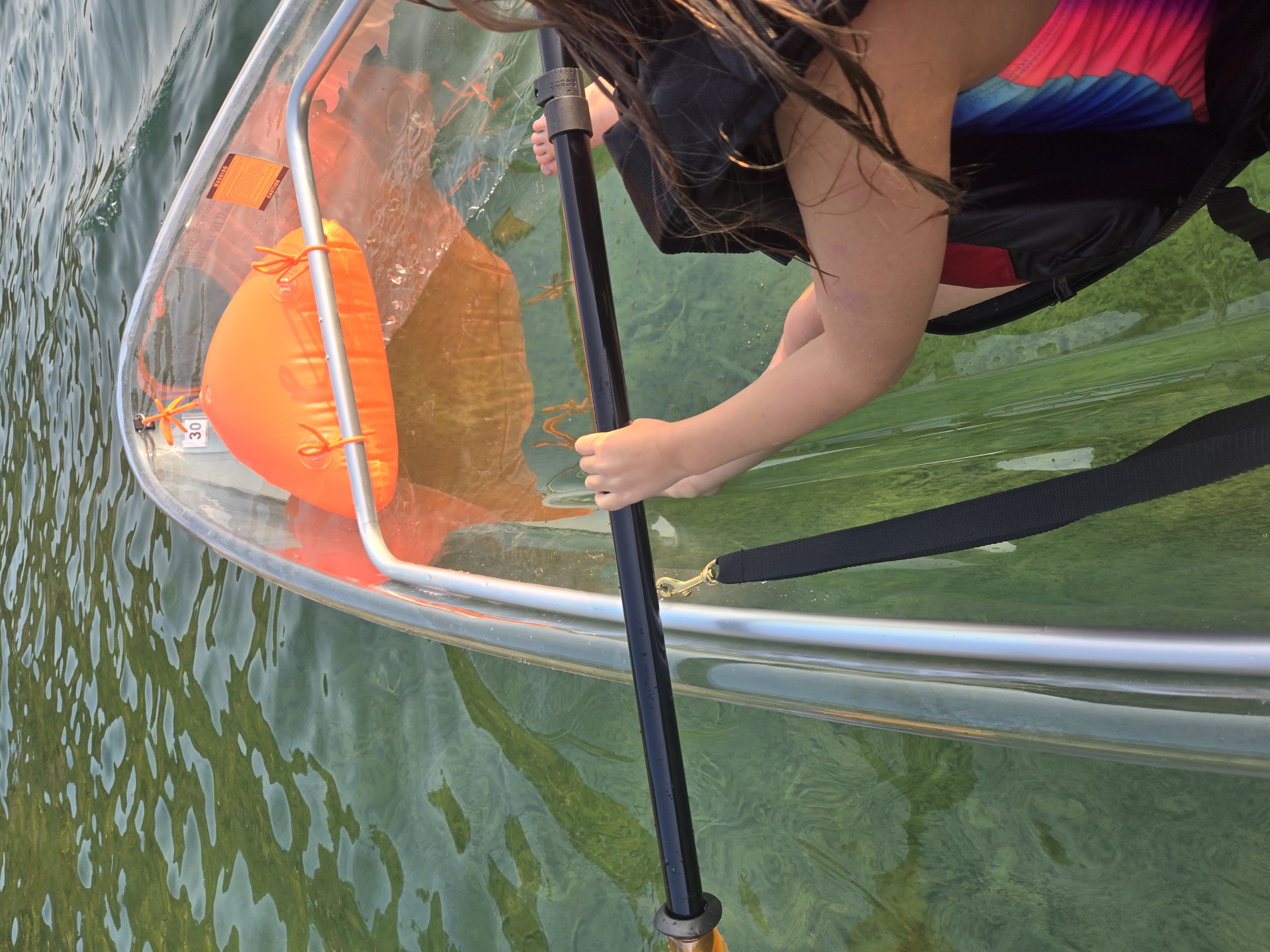written by France Lemire
As soon as we arrive in Laniel and we see the majestic Lake Kipawa, we have one thing in mind: conquering its many bays, guided by our paddle.
This body of water of a remarkable limpidity boasts an average depth of 11,5 metres and reaches, at its maximum, 40 metres. However, it is common to feel like we can touch the lake’s floor with the tip of our paddle, despite it being many metres underneath your boat. Submerged trunks that can be seen here and there inform the paddlers that the body of water is, in fact, a reservoir and has been since the construction of the dam of Laniel. This imposing hydraulic structure, built at the beginning of the 20th century, regularizes the flow of the Ottawa River from Lake Kipawa to Lake Timiskaming, by making it pass through the Kipawa River, which is greatly appreciated by kayakers who love whitewater.
This tentacular body of water dotted by a multitude of islands gives us the remarkable feeling of navigating on a river. With its some 1,600 kilometres of shoreline, we can let ourselves be carried by the flow for kilometres without losing sight of the shore. A true labyrinth, its navigation requires two GPS devices rather than one to take on its numerous bays. The ultimate rule is to stay grouped, especially if your tent and your rations are on someone else’s boat. Simply splitting up to round one of the large islands of the sector may separate you for the remainder of the adventure.
All along the route, some outfitters accessible by water only can be seen here and there. It is nice to know they are there if you ever run into a problem.
francelemire_tat (144)-1024x768.jpg)
francelemire_tat (180)-1024x768.jpg)
The circuit suggested offers 80 kilometres in the enthralling universe of Témiscamingue, and spreads across the northern part of Lake Kipawa. A shuttle of more than 6 kilometres on a gravel road separates the point of departure from the point of arrival.
The adventure begins for Jasmin and me at the Baie du Deux Milles boat ramp, close to the Chalets Baie des Plongeurs outfitter. Once on the water, as soon as we move away from the car through this narrow bay, the wild nature reveals itself in all its intimacy. We instantly reconnect with the present moment in just one breath of fresh air. A couple paddle strokes later, the landscape opens on the Baie des Plongeurs. Here, you may want to stay close to the north shore until the des Huards Island, to enjoy a quick swim on one of the few beaches of the lake. I would stay there for a couple of hours, but Jasmin calls me back to order and we pick up the pace once again in a narrower stretch of the Baie des Plongeurs that quickly turns into the immense du Huard Bay. This segment (bay of the Loons, in English) wears its name well; I counted 21 loons, all singing together. Wow!
At the end of the show, we paddle some more to slide into the Boudel Pass until we reach the Baie Smith in order to go around the two beautiful islands there. We then go offshore, southward, to reach the western shore of aux Ours Island, which we pass by as we cross the Passe à Bouthillette, getting as close as possible, with our eyes peeled to take in the beauty of the green forest and in hopes of seeing a bear. Everything is possible! Halfway through the pass, a narrow passage between aux Ours Island and Garrot Island attracts us like a magnet with its beauty. We navigate there peacefully, in absolute silence, through the giant pines that border the shores. An island near the exit of this idyllic sector welcomes us for a first night of camping.
At sunrise, I discover a perfectly calm lake. I immediately wake up Jasmin from a deep sleep and one hour later we are navigating, from island to island, on top of our reflection, up to the Kipawa Channel. The passage is one of the main arteries of the lake. A few small wilderness camping sites on a carpet of pine needles and with a round fire site pop up here and there. We take the opportunity to stretch our legs after a couple of hours for fun and relaxation.
francelemire_tat (348)-1024x768.jpg)
The beauty of the nature continues to do its work under a permanent sun and delights my mind, eager for the great outdoors.
We then cut through the Passe Fox, a small jewel to explore, sprinkled with many small and charming islands. We come out happy with, in our sight, the gigantic McKenzie Island that we will brush for some kilometres. Jasmin then increases the pace while, for my part, I continue to progress peacefully, carried by the magnetism of those steep sites of the Canadian Shield.
The climax of our journey approaches with each paddle stroke. In the Baie du Canal, the lake flows at the bottom of a canyon, creating a feeling of isolation and plenitude for the paddler. At the end of a narrow corridor bordered by steep granite surfaces, we dive into a small piece of heaven as we reach a circular body of water located in the middle of the larger one. A dock on the shore of a camping-ready island welcomes us. We bring our boats onto land and set up our tent for the night. Tonight, the red of the sky contrasts perfectly with the marvelous blue of the lake’s water. We enjoy this ecstatic moment to dive into the fresh water and in this exceptional decor.
francelemire_tat (35)-1024x768.jpg)
francelemire_tat (34)-1024x768.jpg)
The day after, at the exit of the channel, the magnificent beach of Clermont Island is available to us for a morning swim. We enjoy a bit of sun in a unique environment. Dry toilets and pic-nick tables can be found on the site. Refreshed and ready to go, we get back on the lake but, before we reach the municipality of Laniel almost in a straight line, a quick detour in the sector of aux Fraises Island is added to our itinerary, for our delight. That site, part of the famous Opémican National Park, is without a doubt one of the most beautiful archipelagos in the province. The sweet odour of the pine needle carpet fills the air and we feel as if we are paddling through a quiet haven. A few kilometres from the municipality, we go closer to the shore to admire the magnificent cottages of the sector. We finally reach the marina, our heads filled with amazing landscapes.
francelemire_tat (334)-1024x768.jpg)
You may like these articles…
Need help
planning your stay?
Official tourist guide
Access to the region
FAQ
Sign up for our newsletter!
Let our inspiring suggestions come straight to you!












